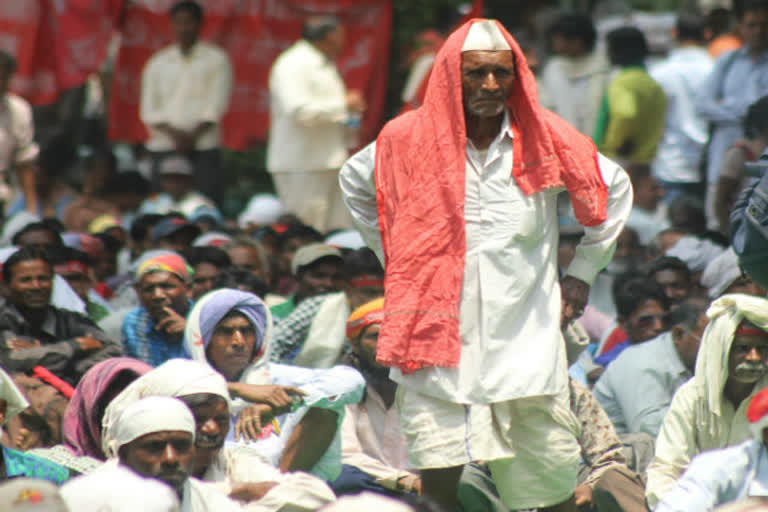Hyderabad: Perhaps, for the first time in recent decades, farmers across the country took to streets in 2018 demanding a very basic thing – fair and remunerative price for their produce.
Farmers protests were organised, largely by apolitical associations, in Karnataka, Tamil Nadu, Uttarakhand, Maharasthra, West Bengal, etc throughout the year.
Remember Kisan Mukti March! In last November, farmers from across the country assembled in the Ramlila Maidan in New Delhi and marched to the Parliament in protest of their due.
As a farmer leader rightly put it, besides the natural disasters of floods and droughts, farmers had to face – ‘government-made’ disasters of demonetisation (2016), Goods and Service Tax (2017) and high diesel prices (2018).
Taking political route to protest – Nizamabad Example
As per the 2011 Agricultural Census of India, an estimated 61.5% of the population are directly or indirectly dependent on agriculture. The number of farming households is 159.6 million.
As farmers are of the opinion that not a single political party is concerned about their plight and politicians are doing only lip service, they have taken political plunge in few parts of the country.
Read more:Ahead of 31 July deadline, know changes in ITR 1 or Sahaj form
To send a strong political message to the ruling parties, disgruntled farmers in the Nizambad Lok Sabha constituency in Telangana filed nominations for the upcoming polls to be held on 11 April with the demands – establishment of Turmeric Board in the region and Minimum Support Price for red jowar. As of now, 179 farmers are in the fray.
Impact of farmers contesting elections
Though more than 60% of the population are dependent on agriculture, out of it only negligible are in Indian politics. The present political activism by the farming community, is expected to exert considerable pressure on the ruling elite.
All the farmers contesting elections may not get elected as the present day elections are dominated by money, muscle and caste power. But it is for sure, the long pending demands of the farmers, like MSP hike, market reforms, building infrastructure, transfer of knowledge from lab to lands, development of high yield and climate change resistant varieties would definitely get the attention of even political parties.
By looking at the manifestos of Congress, BJP and regional parties, one can say, Indian farmers succeeded to an extent. But the real test lies in the implementation of those policies.




